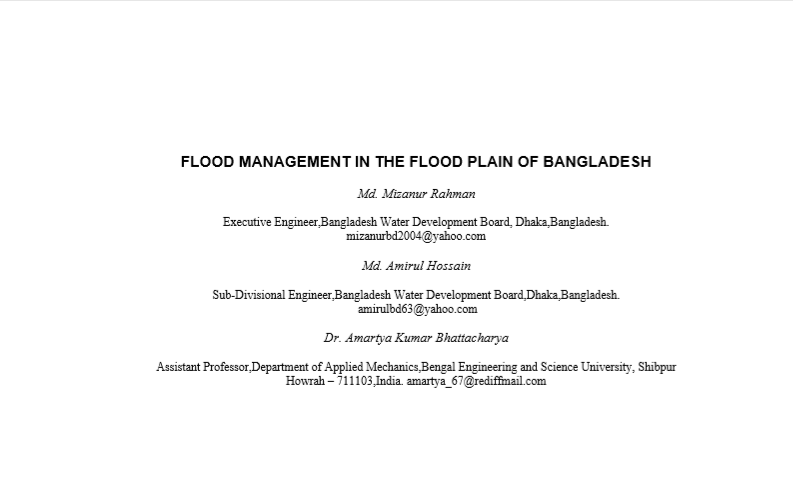FLOOD MANAGEMENT IN THE FLOOD PLAIN OF BANGLADESH

Bangladesh along with the state of West Bengal in India is situated in the lowest area of the Hindu Kush – Himalayan Region (HKH) and is famous as one of the highest flood prone countries in the world. Flood to some extent is an annual expected and well-come event for many reasons for this country. But extreme flood inundates more than half of the country’s landmass causing immense suffering to the human life, damages properties and economy. Aim of the flood management in Bangladesh is to minimize damages or to avoid disastrous situation. Though the country is in the eastern part of the lowest ridge of HKH but geography and location of the country make hydrology of Bangladesh very diverse, complex and unique. The North-Eastern part of the country has the river networks with upper hilly catchments having one of the world’s highest rainfall intensity and causes frequent flash floods. In the North-Western part rainfall intensity is lower, higher altitude and mighty perennial river network causes river flood. The South-Eastern part has moderate rainfall intensity, hilly as well as coastal plain land, flashy and tidal river network causes both the storm surge and flash flood. The South Western region has also moderate rainfall, coastal plain land and tidal rivers cause storm surge due to cyclone. Principles of flood management in the country based on these different types of floods and geographical conditions either by non-structural or structural measures. As a non-structural measure for flood loss minimization, flood forecasting and warning services has been emphasized. Structural measures began in late 60’s by implementing number of flood control projects.
- Author(s): Md. Mizanur Rahman, Md. Amirul Hossain, Dr. Amartya Kumar Bhattacharya Download

